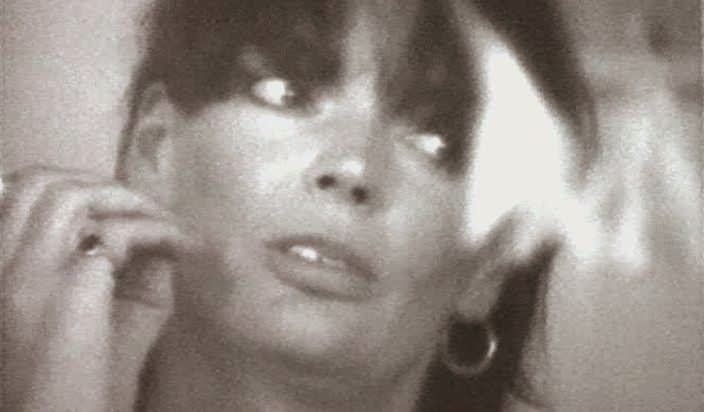 |
| Barbara Steele, among the interviewees in Delphine Seyrig's SOIS BELLE ET TAIS-TOI. |
Finally caught up today with a film I've long wanted to see: SOIS BELLE ET TAIS-TOI ("Look Pretty and Shut Up," shot 1970-76, released 1981), a documentary directed by actress Delphine Seyrig. Shot on prehistoric videotape in grainy B&W, the film finds her interviewing a number of actresses (including Jane Fonda, Ellen Burstyn, Maria Schneider, Anna Wiazemsky, Candy Clark, Cindy Williams, Millie Perkins and others) about the cruel realities of their profession and how unrealistically women were depicted onscreen, at a time when many of the most popular films were about male relationships.
I can't say it's a well-made film - Seyrig doesn't use videotape too differently than audio tape, and the interviews are crudely assembled - but what it contains is of terrific interest as a time capsule of what the female artists of this period were coping with professionally. You might expect it, but there is zero discussion of sexual harrassment - the Seventies weren't that outspoken.
Jane Fonda, speaking impeccable French in footage added to the film in 1976, talks about filming JULIA (1977) with
Vanessa Redgrave and how the men who wrote, produced and directed it were paranoid about telling
the story of a close friendship between two women, actually counting how many times they touched in each take, fearing that too much touching would make them appear like lesbians. Fonda is the only woman
interviewed who had ever been asked to play the friend of another female
character, and none of the women interviewed could recollect ever playing a scene in which they were
required to show warmth toward another woman.
Also revealing is a clip of Barbara Steele (pictured), lamenting her work onscreen, which she insists is the absolute opposite of who she is. She admits to having been a cult actress in "Grand Guignol, outrageous kind of horror flicks" and that she's "done a lot of films I didn't want to do" and that she's now [1970] actually stopped working because she hated what she was being offered so. "I have bad karma also, you know," she says. "I think that you should really try and stick with what you want to do, what makes you LIKE yourself. I mean, I have this incredible shyness about it. I feel like hitting people in the head, when people come up and say 'Hey, we loved you in...' and I say 'But THAT'S not me... it's somebody else's image... screw THAT!' Don't tell me that you liked me in THAT because I wasn't even THERE! That was somebody else!"
Also revealing is a clip of Barbara Steele (pictured), lamenting her work onscreen, which she insists is the absolute opposite of who she is. She admits to having been a cult actress in "Grand Guignol, outrageous kind of horror flicks" and that she's "done a lot of films I didn't want to do" and that she's now [1970] actually stopped working because she hated what she was being offered so. "I have bad karma also, you know," she says. "I think that you should really try and stick with what you want to do, what makes you LIKE yourself. I mean, I have this incredible shyness about it. I feel like hitting people in the head, when people come up and say 'Hey, we loved you in...' and I say 'But THAT'S not me... it's somebody else's image... screw THAT!' Don't tell me that you liked me in THAT because I wasn't even THERE! That was somebody else!"








